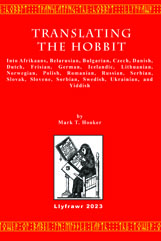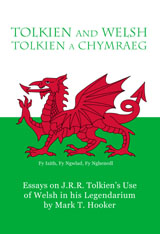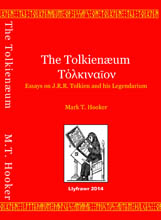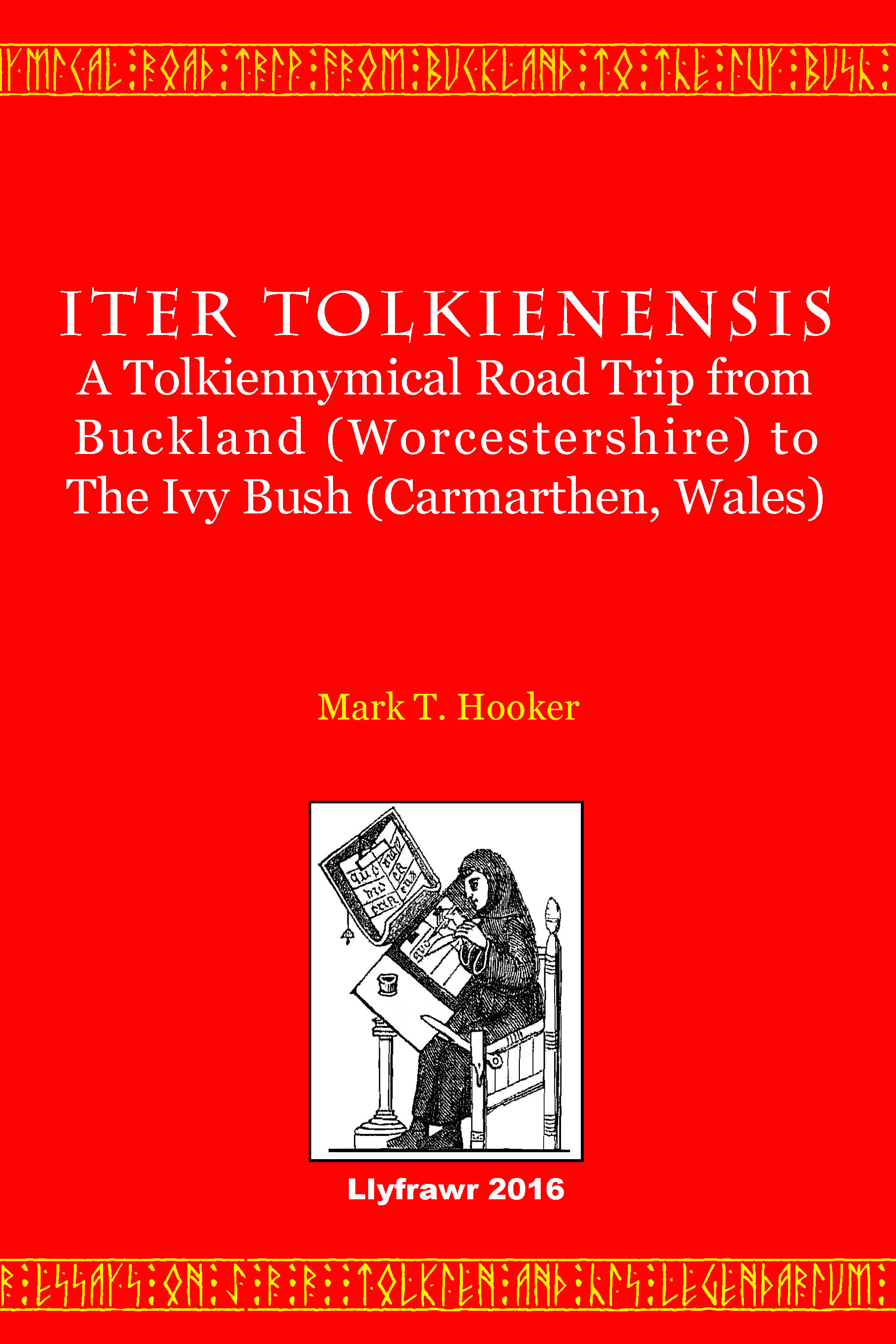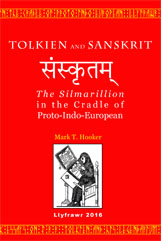Into Afrikaans, Belarusian, Bulgarian, Czech, Danish, Dutch, Frisian, German, Icelandic, Lithuanian, Norwegian, Polish, Romanian, Russian, Serbian, Slovak, Slovene, Sorbian, Swedish, Ukrainian, and Yiddish
|
Also by this author: | The present volume is not intended as an exhaustive discussion of the problems encountered when translating The Hobbit. It is, rather, a representative overview of the types of problems that have to be solved to bring The Hobbit to an audience that speaks a language other than English. Since many of these problems are not immediately apparent to modern-day speakers of English, segments of the discussion will not only be of interest to professional translators, but also to both present-day native- English speakers (especially speakers of American English), and to English-language learners. The comparative analysis of the 36 translations provides a broad perspective of the difficulties of interpreting the text of The Hobbit, which should also make it of interest to translators working in languages not included in the study. The title of this book is: Translating The Hobbit: Into Afrikaans, Belarusian, Bulgarian, Czech, Danish, Dutch, Frisian, German, Icelandic, Lithuanian, Norwegian, Polish, Romanian, Russian, Serbian, Slovak, Slovene, Sorbian, Swedish, Ukrainian, and Yiddish. (Yes, that’s the title.) Although you can only count 21 languages in the title, there are 36 published translations studied in this project. Retranslating The Hobbit is very popular. There are, for example, nine Russian translations and three Polish. There are sections on how to translate pickles and pork pie (it’s harder than it looks), and on how to recognize and translated Tolkien’s slight philological jests, for example: • calling Bilbo “audacious”—which is the gloss of Tolkien’s surname in the standard reference German dictionaries of the time—and • Tolkien’s parody of William the Conqueror as the leader of a band of Trolls—Trolls are traditionally Scandinavians (Normans [read Norsemen], like William and his troops), and they are eating “mutton”, the French name for sheep when it is cooke, a word brought over from Normandy with William. Most translators kept Troll as “Troll”, but the Czech, the Slovene, and the Serb translations localized the name of the miscreants, which makes the joke fall flat, because the localized named are no longer “Normans”. From the PrefaceThe Hobbit has sold more than 100 million copies and has been translated into more than 60 different languages. This makes it one of the most popular children’s books of all time. Since many of the translation problems discussed here are not immediately apparent to modern-day speakers of English, segments of the discussion will not only be of interest to professional translators, but also to both native-English speakers (especially speakers of American English), and to English-language learners. You have to know what the text means before you can translate it. The present volume is not intended as an exhaustive discussion of the problems encountered when translating The Hobbit. It is, rather, a representative overview of the types of problems that have to be solved to bring The Hobbit to an audience that speaks a language other than English. The comparative analysis of the 36 translations provides a broad perspective of the difficulties of interpreting the text of The Hobbit, which should also make it of interest to translators working in languages not included in the study. I n Nomenclature, Tolkien cites forms in Middle-English, Old English, Danish, Dutch, French, Middle High German, Old High German, Modern German, Icelandic, Old Norse, Norwegian, and Old Swedish. These languages likewise find a place in this study. The ability to read German was de rigueur for academics studying linguistics in Tolkien’s day (and on into mine), because the Germans were on the leading edge of linguistic studies and published extensively in German. This study is unique, in that it includes the rare Icelandic translation. In a letter, Tolkien wrote that Icelandic was a language that “would fit it [The Hobbit] better than any other I have any adequate knowledge of.” (L.430) The Tolkiens had at least four native-Icelandic-speaking au pairs who lived with them, with whom Tolkien practiced his Icelandic. Tolkien had a fondness for tales of Iceland, as is evidenced by the considerable number of parallels between The Hobbit and Jules Verne’s Journey to the Center of the Earth, which is set in Iceland. The entrance to Verne’s underground realm is in the crater of the Snæfellsjökull, a real-world volcano in Iceland. The entry to Tolkien’s underworld realm is located on the slopes of Erebor, a Mountain that demonstrates a number of volcanic characteristics, which Tolkien makes explicit: “suddenly a vast rumbling woke in the mountain underneath as if it was an old volcano that had made up its mind to start eruptions once again.” (H.207) When Bilbo gets separated from Thorin & Co., just like Verne’s hero is separated from his companions in Verne’s novel, Bilbo comes to a lake. (H.78) There is an underground sea in Verne’s novel, too. Both the lake and the sea have an island in the middle. (H.79)[1] In another letter, Tolkien wrote that “Mirkwood is not an invention of mine, but a very ancient name, weighted with legendary associations.” (L.369) In Nomenclature, Tolkien equates Mirkwood with the Old Norse Myrkviðr, and says the name should be translated by sense, preferably with elements of a poetic or antique quality. Myrkviðr is exactly the solution of the Icelandic translator. I, personally, however, found the solutions of the Norwegian translator more to my tastes. Points for discussion were identified by reading one of the translations in parallel with the original until I reached a passage that did not match the translation I expected for that language. I then consulted the other translations to see if any of them used the same approach. The comparative analysis of the 36 translations permitted identification of common misconceptions, the similarities of the competent renditions, and unique, insightful solutions to difficult problems. Tolkien made two nearly proverbial statements about analyzing the nomenclature of his Legendarium: • “To me a name comes first and the story follows.” (L.219) • those who attempt to analyze the nomenclature of The Lord of the Rings “show little understanding of the process of how a philologist would go about it.” (L.380) Those two statements suggest that, since I am a linguist (American English for philologist), I might reasonably attempt a productive reading of Tolkien’s story, because I know how a philologist would go about it. Nota Bene: The author’s suggested translations should be read more as calques than as colloquial translations. They were crafted to emphasize specific points in the discussion. [1]For a more nuanced discussion, see: Hooker, “Journey to the Center of Middle-earth,” The Tolkienæum, Llyfrawr, 2014, pp. 1-12. |
Pagination: xviii + 270. Trade Paper $14.95.
To learn more about the book, follow the links below.

